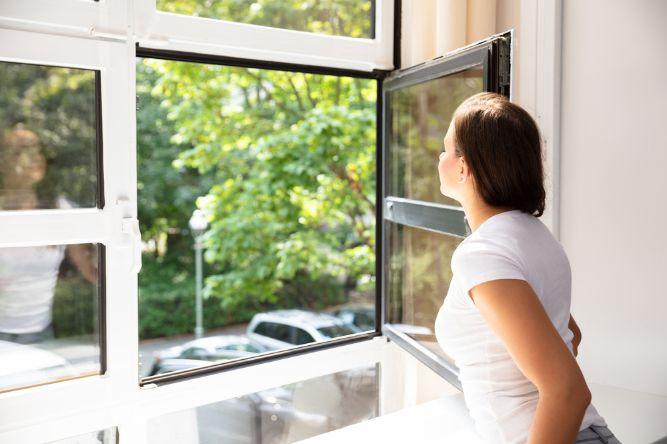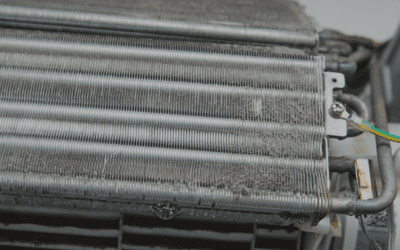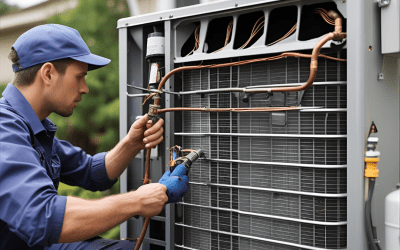Heating and cooling account for nearly 50% of the average energy consumption in U.S. homes, according to the U.S. Energy Information Administration. Yet, most of the energy gets wasted because of outdated systems, poor insulation, air leaks, and inefficient usage habits. That means so much of your money could slip through the cracks. So, how do you stop energy from going to waste—and your money with it? Well, from sealing drafty windows to upgrading to a smart thermostat, there are plenty of ways to cut waste and keep your home comfortable year-round.
In this guide, we have discussed some of the smartest, most effective ways to boost your home’s energy performance. Let’s get started!
Ways to Improve Your Home’s Heating and Cooling Efficiency
There are two major ways to increase the efficiency of heating and cooling in your HVAC system. Some improvements can be done on your own by making a few changes, and others need professional servicing.
DIY Improvements You Can Make Yourself
Seal Air Leaks
When weather stripping or old caulk, particularly near joints or where different materials meet, is worn out, it can cause air to leak from your room. This puts a lot of load on your HVAC system to work harder and use more energy. When this gets worse, it tends to cause a major repair that will cost you a lot of money. To improve it, inspect areas around windows, doors, electrical outlets, attic hatches, and duct joints. If you find one, use caulk for cracks, weatherstrips for moveable joints, and expanding foam for larger gaps.
Clean Air Filters Frequently
When the air filters in your HVAC system are clogged with dust and dirt particles, they tend to restrict the airflow. It eventually forces your system to work even harder and lose efficiency. Clean the air filters every 1-3 months, depending on the way you use it, and if you have pets and allergies, you may need to do it more often to maintain the quality of air.
Use Window Treatments
When you don’t have proper shades on your windows, heat and even cold waves tend to have an effect on your room temperature. Add thermal curtains, cellular shades, or reflective windows to insulate your windows as well.
Use Less Heat Inside the House
Electronics, lighting, and appliances generate heat, especially in warmer months. Switch to LED lighting, unplug unused electronics, and avoid using ovens or dryers during the hottest part of the day. Opt for microwave or outdoor cooking in the summer.
Ready to save on heating and cooling? We’ll help your system run smarter.
Improvements Achieved by Outsourcing to Professional Services
Add Proper Insulation
Proper insulation slows heat transfer, keeping your home warmer in winter and cooler in summer, eventually reducing the load on your HVAC system and cutting energy bills. To make sure that it continues to save, pay attention to the kind of materials that are being used, especially in the attics, exterior walls, and basement. The use of fiberglass batts, blown-in cellulose, and spray foam is known to be the most effective, and they last a very long time.
Install a Smart Thermostat
A thermostat regulates indoor temperature by signaling your HVAC system when to heat or cool. Replacing an outdated model with a smart thermostat can optimize the system’s performance in cooling and heating. These advanced devices use sensors, scheduling features, and learning algorithms to adjust temperatures automatically based on your habits and daily routines. Some models also offer smartphone control and adapt to real-time weather, helping reduce energy waste when you’re away or asleep. By maintaining consistent comfort and efficiency, a smart thermostat can lower energy bills and extend the life of your HVAC system.
Upgrade Your Heating and Cooling System
When your system is older than 10 years or breaks down very frequently, it will probably waste a lot of energy and resources, whereas newer models are made to use less energy and keep your home at an optimal temperature.
Try Zoned Heating and Cooling
Zoning systems help in letting you heat or cool only the rooms that you are using and boost comfort in multiple homes. You can install a damper in your ductwork or use a ductless mini-split system with individual thermostats, which can be programmed by phone for better efficiency.
Programmable Ceiling Fans
Programmable ceiling fans can be used in both winter and summer and reduce the load of optimizing temperature from the HVAC system by circulating air. In summer, when they rotate anticlockwise, they create a cooling breeze, and in winter, they rotate clockwise to help push warm air down.
Heat-Reflective Roof Coating
Our roofs absorb the most heat from the sun, especially in the warmer months. That heat from the sun radiates into your home, forcing your air conditioner to work harder to maintain an optimal temperature. You can install a heat-reflective roof coating, which will bounce the heat from the sun back and won’t let your roof absorb the heat and affect the room temperature.
Periodic HVAC Pressure Balancing
If you would like the temperatures of all your rooms to be the same, but it is always too hot or too cold. There is a possibility that your HVAC system is struggling with uneven air pressure. This imbalance makes the system work harder to heat or cool your home evenly, wasting energy and raising your bills. Get your system’s pressure balanced so that the right amount of airflow is given to all your rooms.
Conclusion
Following the most efficient ways to cool a house or keep it warm can effectively increase your HVAC system’s lifespan and functioning efficiency. Along with that, schedule regular maintenance at least twice every season. This will help your HVAC system run more smoothly and catch potential issues before they turn into costly repairs.
If you’re in need of reliable & professional maintenance or HVAC repair in San Antonio and surrounding areas, Classic Air Conditioning and Heating has you covered. From filter replacements and refrigerant checks to full system inspections, we handle it all with precision and care—so your system stays ready for any season.






